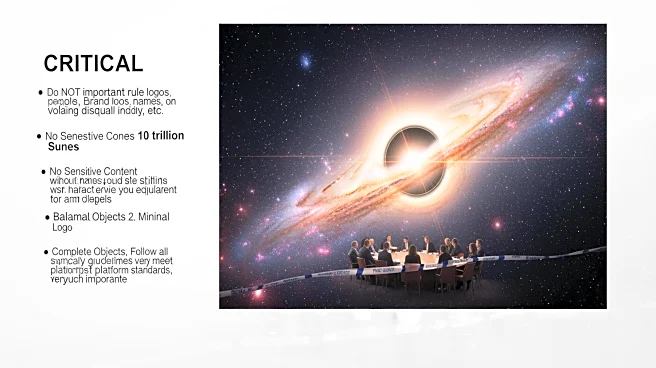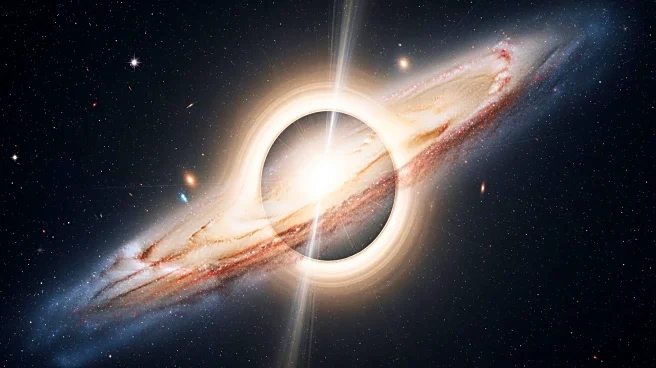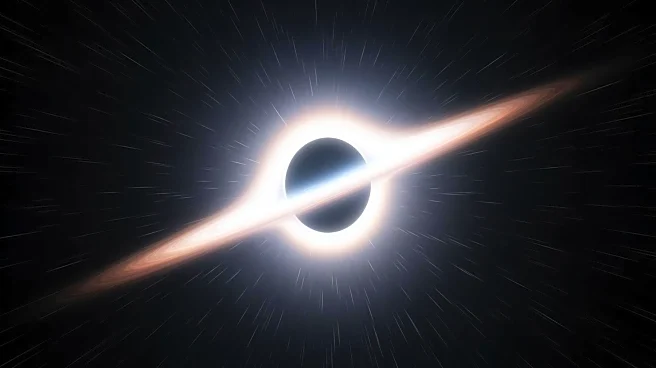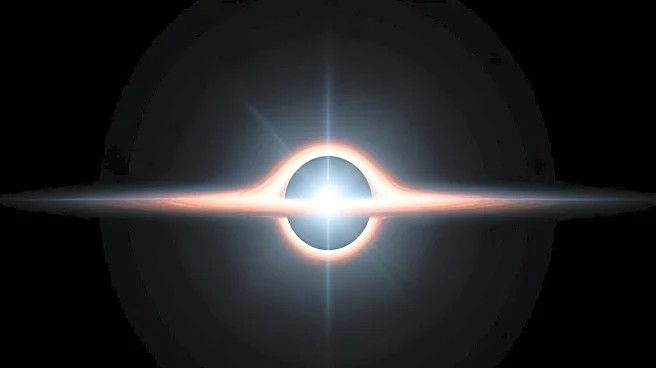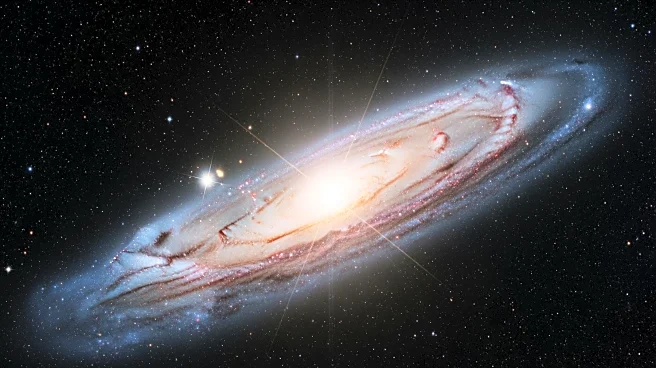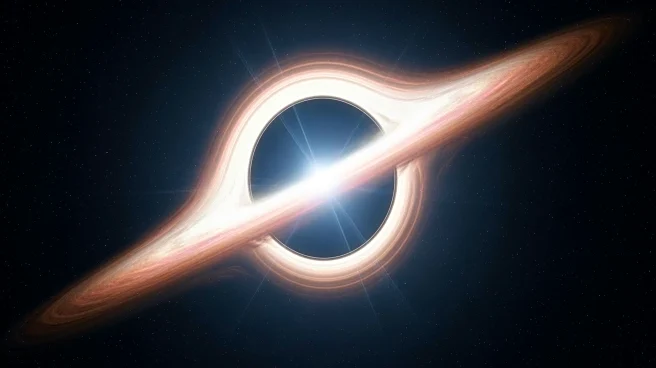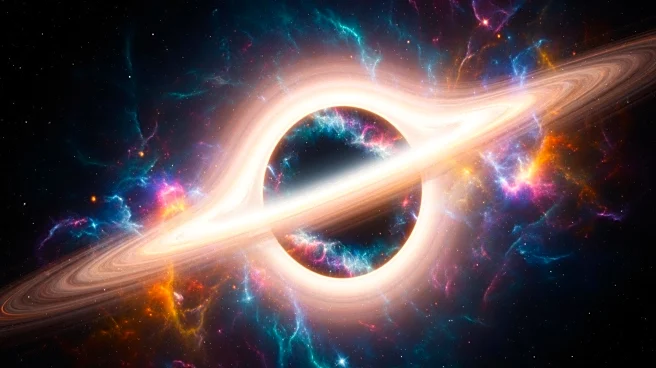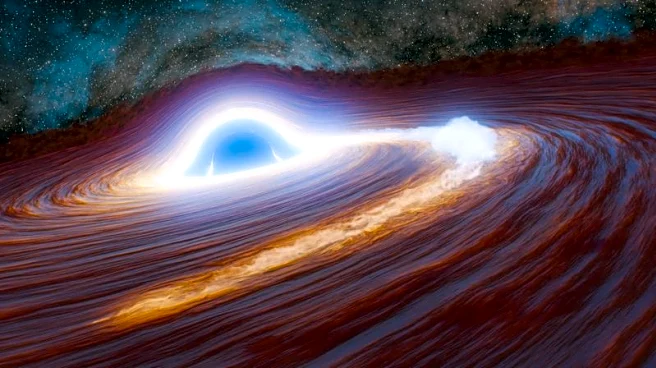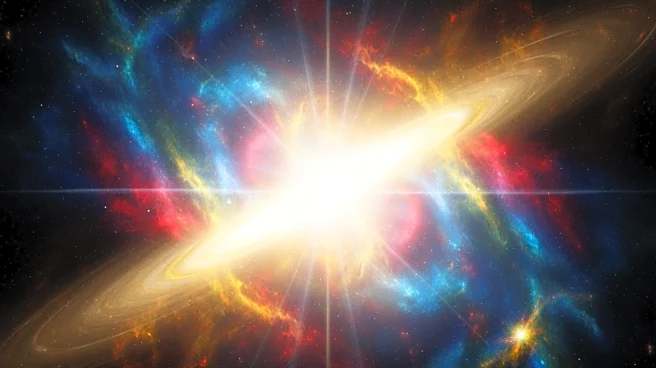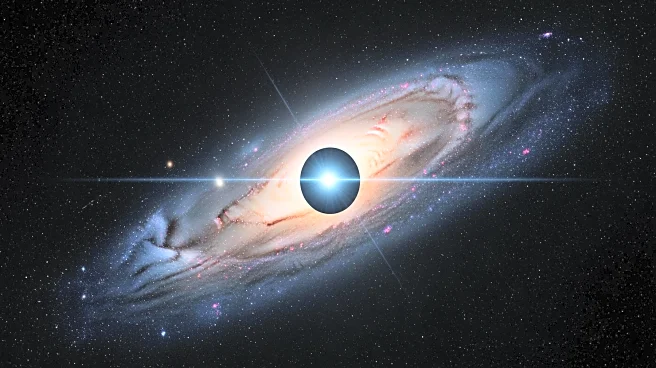What's Happening?
A black hole flare, emitting light equivalent to 10 trillion Suns, has been observed at an active galactic nucleus (AGN) located 10 billion light-years away. The flare resulted from a tidal disruption
event, where the AGN's gravity consumed a nearby star with a mass 30 times that of the Sun. This event, recorded by the Zwicky Transient Facility, represents the largest and most distant black hole flare to date, providing unprecedented insights into AGN behavior and cosmic phenomena.
Why It's Important?
The observation of this massive flare challenges existing models of black hole physics and offers a rare glimpse into the dynamics of AGNs. The event's energy output is significantly higher than any previously known AGN transient, providing valuable data on the interaction between black holes and their environments. Understanding these processes can shed light on the growth and influence of massive black holes shortly after the Big Bang, contributing to the broader field of astrophysics and cosmology.
What's Next?
Scientists will continue to study the flare as it fades, using future observations to uncover more details about the event. Upcoming missions, such as the Roman Telescope and Habitable Worlds Observatory, will further explore these phenomena. The discovery also fuels interest in multi-messenger astronomy, potentially linking high-energy bursts to gravitational waves or neutrinos. This event serves as a laboratory for extreme physics, with implications for future research and technological advancements in space exploration.
